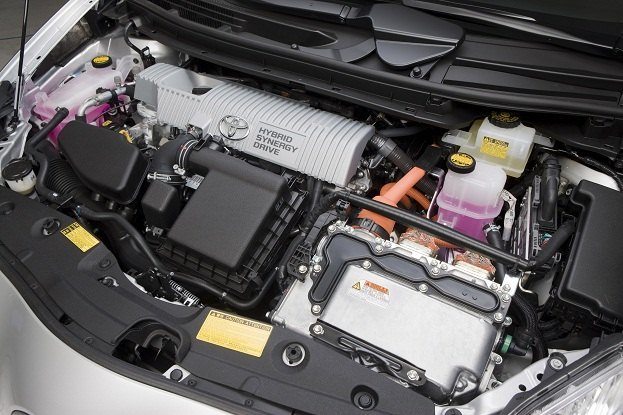As consumer, we grow accustomed to certain norms in the world. For a very long time, the majority of the marketplace accepted internal combustion engines fueled solely by a gasoline should propel automobiles. Taking an enormous risk in tempting motorists with the concept of combining electrical power to moving a gasoline vehicle, Toyota Motor Company gambled to introduce the world to hybrids in 1997. Less than fourteen years later, the sale of the 3-millionth vehicle recorded at the end of February marked an important milestone for the division’s wager on hybrid technology.
Kicking off their public unveiling of the advanced powertrain, the commercial duty Toyota Coaster became the first production application of hybrid technology in Japan in 1997. By the end of that year, the Japanese-based automaker began selling a vehicle that would become a game-changer to the automobile in general. The Toyota Prius’ introduction in late 1997 immediately advocated the advantages of what branded as Hybrid Synergy Drive. Coming to United States in 2001, the Prius developed a love affair with many world customers. Charmed by the vehicle’s environmentally friendly nature, Toyota Prius hybrids rose to cultural icon when talk of “carbon footprint” and $4 a gallon gasoline frightened motorists away from larger gas-guzzling counterparts. Toyota began to expand use of Hybrid Synergy Drive in 2005 starting with the Toyota Highlander as well as the Lexus RX series of crossover vehicles.
While hybrid powertrains would later be introduced to other produces including the Camry sedan, the Toyota Prius continues to remain the heart and soul of Toyota’s electric assist movement. As expected, the Toyota Prius makes up the lion’s share of the brand’s hybrid sales. Accounting for 72 percent of the world sales of Toyota hybrid vehicles, three generations of the Prius popularity is set to gain more product diversity this year when the Prius V and a plug-in hybrid version arrive for sale.
By selling three million hybrid power train vehicles, Toyota continues slowly silence critics who argued (and some continues to argue) vividly against the propulsion solution. Following a speech in 2004, General Motors’ vice president of product development Robert Lutz was famously quoted underestimating Toyota’s approach quoted as calling it “….huge, huge, immeasurably valuable PR coup”. Before leaving General Motors, Lutz would be championing to the cause of hybrid vehicles in 2007 when the plug-in Chevrolet Volt debuted as a concept car.
Some critics also concern themselves about theories the electrical powertrain components would be expensive to maintain and repair. As of 2011, many of the first-generation North American Toyota Prius hybrids are still running on the original nickel-metal hydride battery after 10 years. As the sales of hybrid cars grow, the demand for licensed mechanics specializing in these high-voltage powertrains is being met at Toyota dealership outlets.
Fourteen years since Toyota daring push for gasoline-electric hybrid vehicles, the impact of three million in global sales has inspired most automakers to invest in production-quality advanced powertrains. Ford, Mercedes-Benz and BMW are a sample of manufacturers engaging in extensive full hybrid development. Seeing the market react, Toyota is continuing to evolve their hybrid product offerings. Toyota’s Lexus division added their new compact CT 200h this model year as a 42 mile per gallon luxury traveler. The 2011 Geneva Motor Show unveiled the Japanese-based auto company is preparing to introduce an even smaller hybrid mated with a redesigned Toyota Yaris. Working past the three-million range, Toyota’s hybrid gamble has clearly paid off as the company is best ready for the decade where greater fuel economy and lower emissions will be paramount.
Information and photo source: Toyota Motor Sales USA


